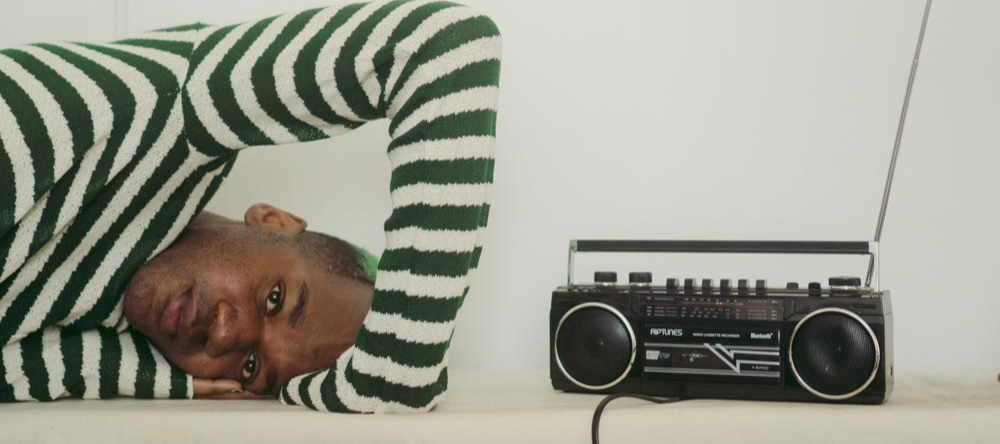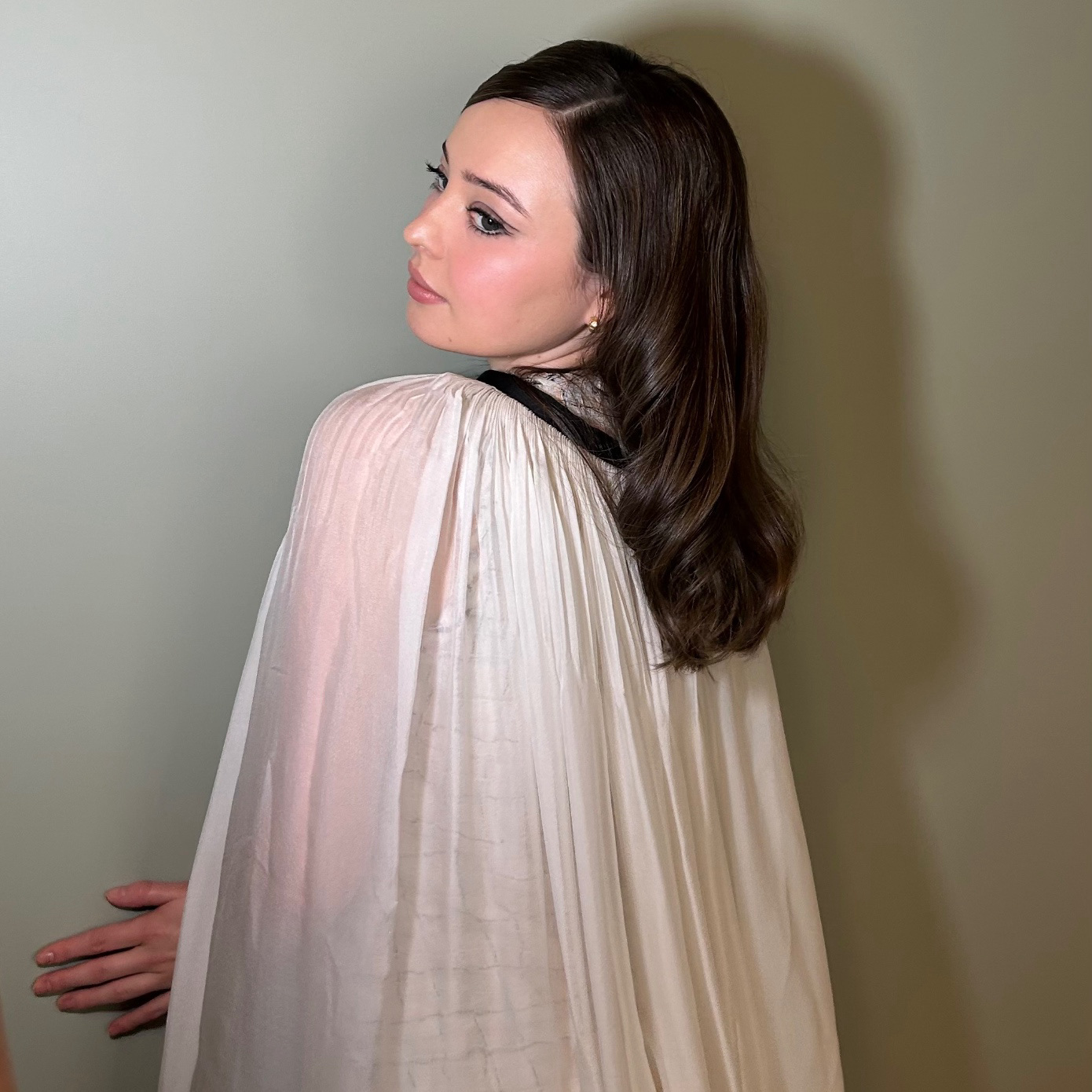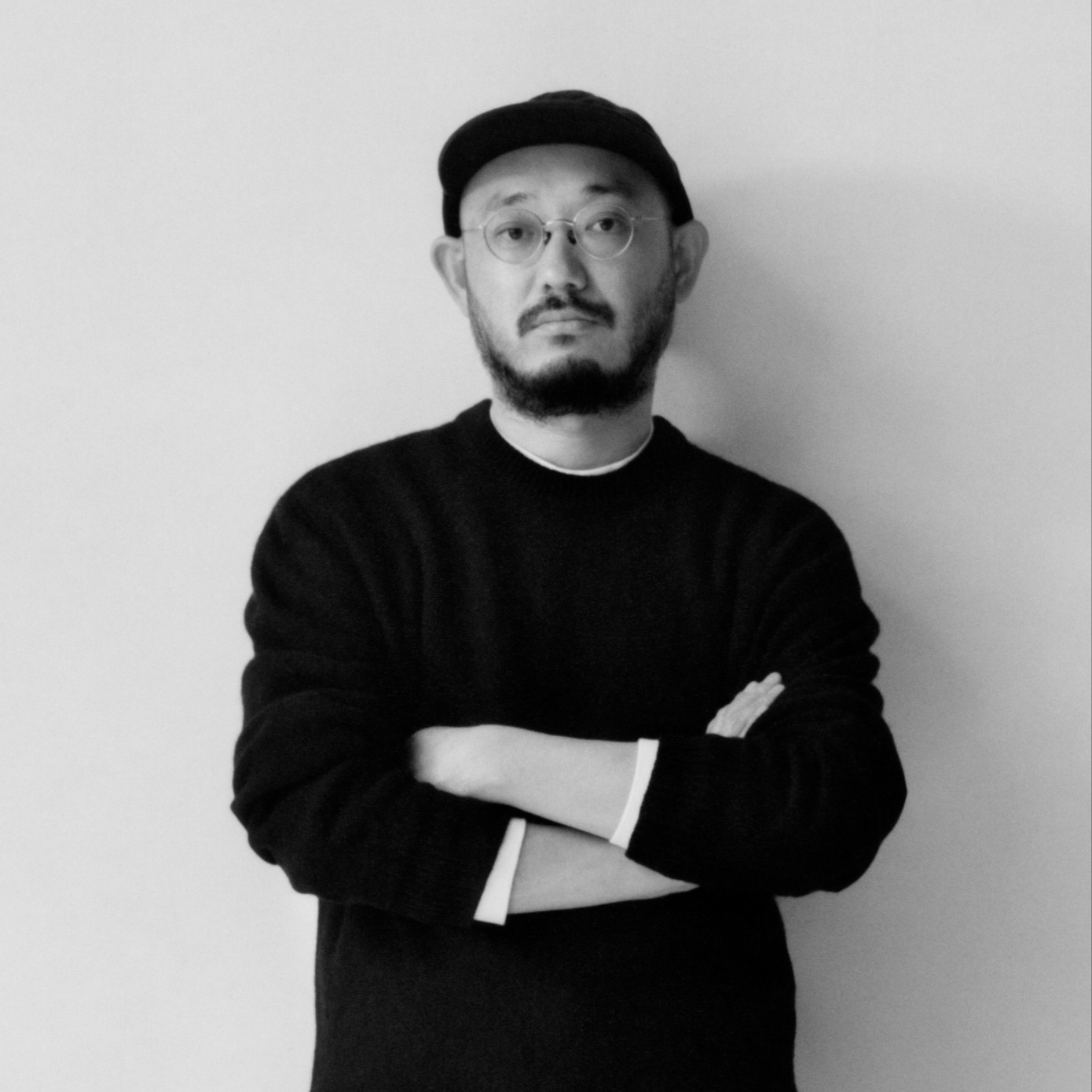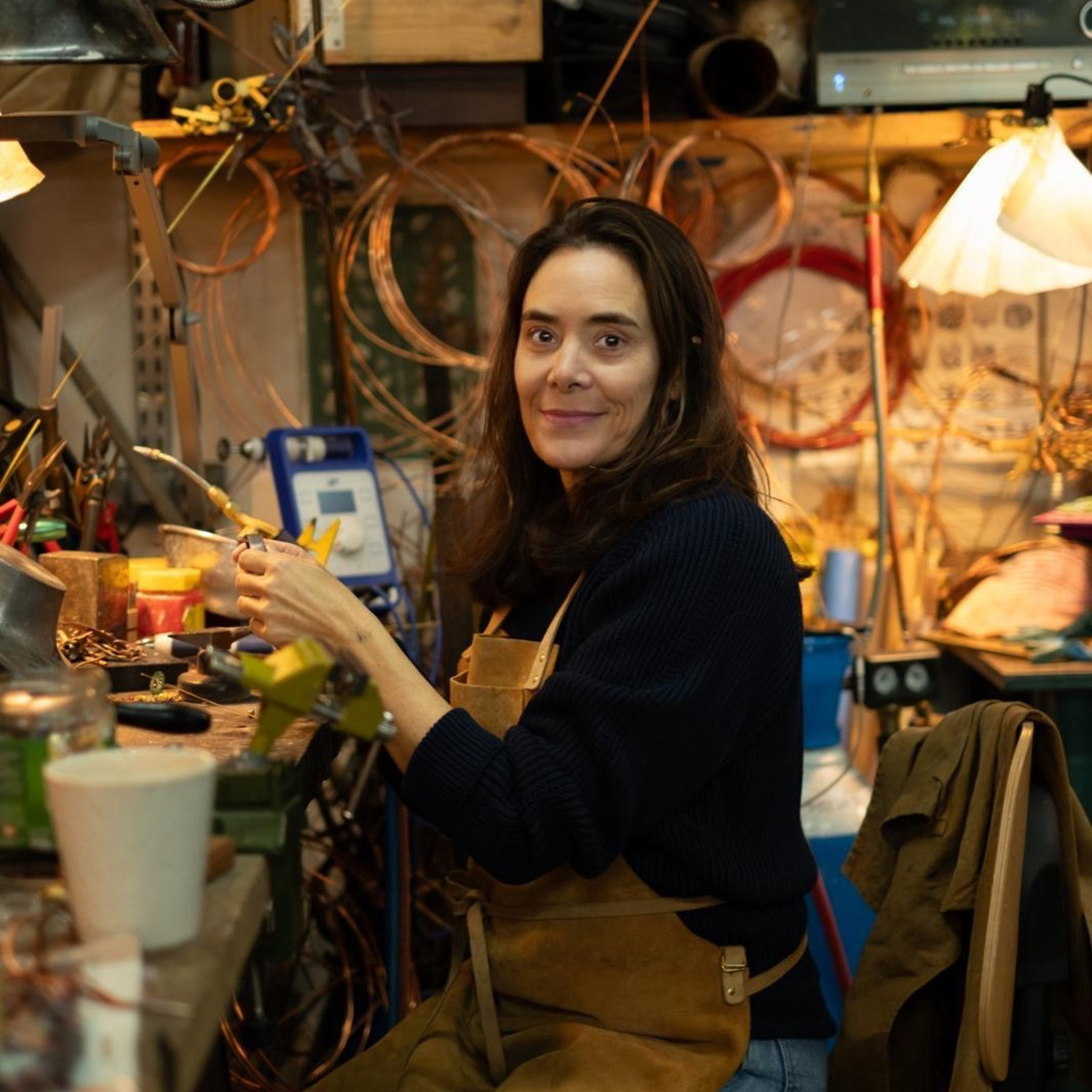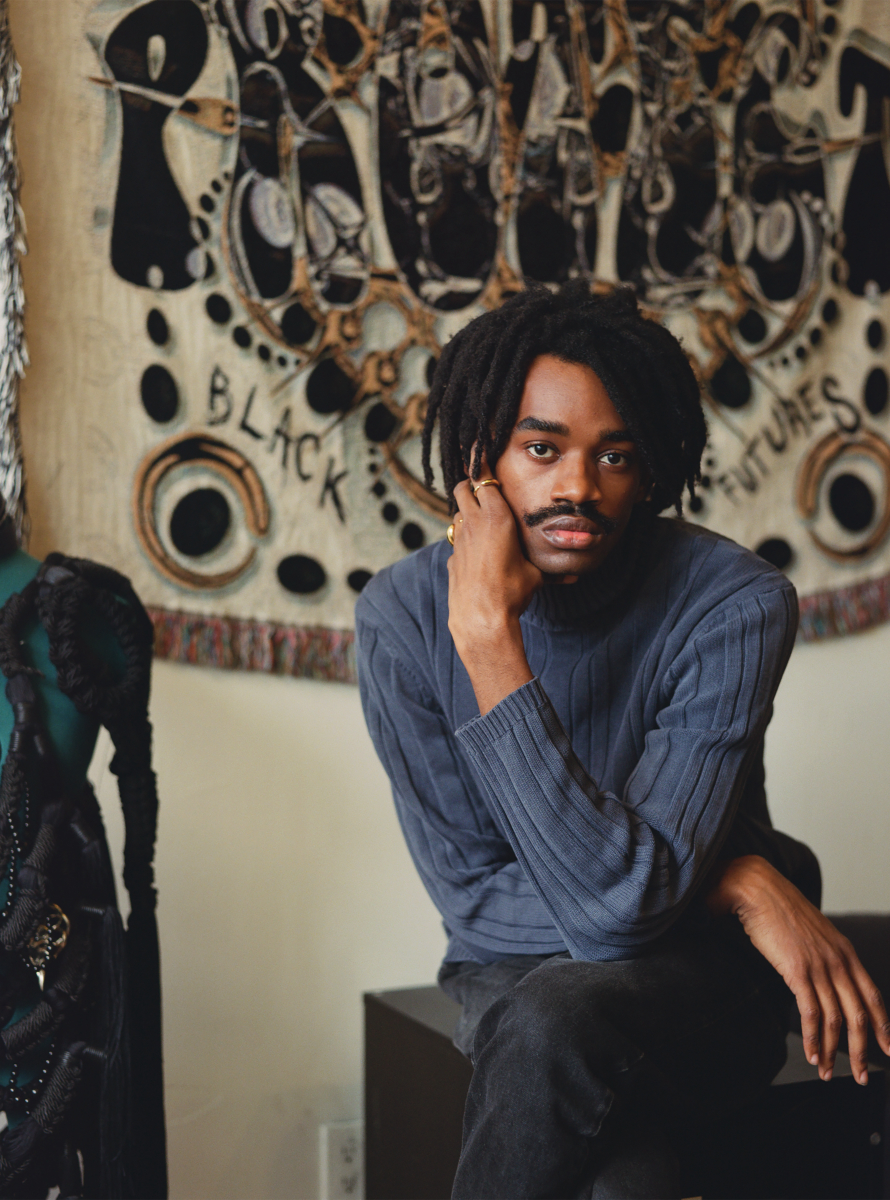
and body suit of his own creation. Portrait by Roeg Cohen.
Khiry Makes Afrofuturism Sparkle and Pop
Khiry designer Jameel Mohammed came from a dream space. Now he’s making the jewelry of our dreams and dressing the stars, from Michelle Obama to Tyra Banks to Megan Thee Stallion.
For Jameel Mohammed, the creative director of luxury jewelry brand Khiry, Afrofuturism is everything. It’s the filter through which he defines his art and his identities. As we talk over Zoom, I see a tapestry with the word “futures” written across it and intricate designs which he describes to me, explaining what they mean as well as their history. Growing up in Chicago as the only child to a single mother, Jameel found himself often existing in what he calls a “dream space” in which he would imagine and reimagine the world through his eyes, and eventually began creating art that would bring that world he had imagined in some way to this world.
“As a kid, I had a lot of free time and I occupied myself with making art, or imagining and being in these kinds of dream spaces that I now recognize as really central to my practice,” Jameel tells us. “I started with anime and manga and comic-book drawing, which involves a lot of character design and development and a lot of thinking of how what this character holds and wears kind of signifies that they’re in an alien realm or a futuristic realm.”
In middle school, his aunt had bought him some leather paint as a birthday gift and Jameel began making custom sneakers. “I started a custom sneaker business in the summer before I started high school,” Jameel says, grinning at the memory. “At the time, I was trying to find ways to incorporate art into a business that could directly sustain my life. And so that was like an early version of that.”
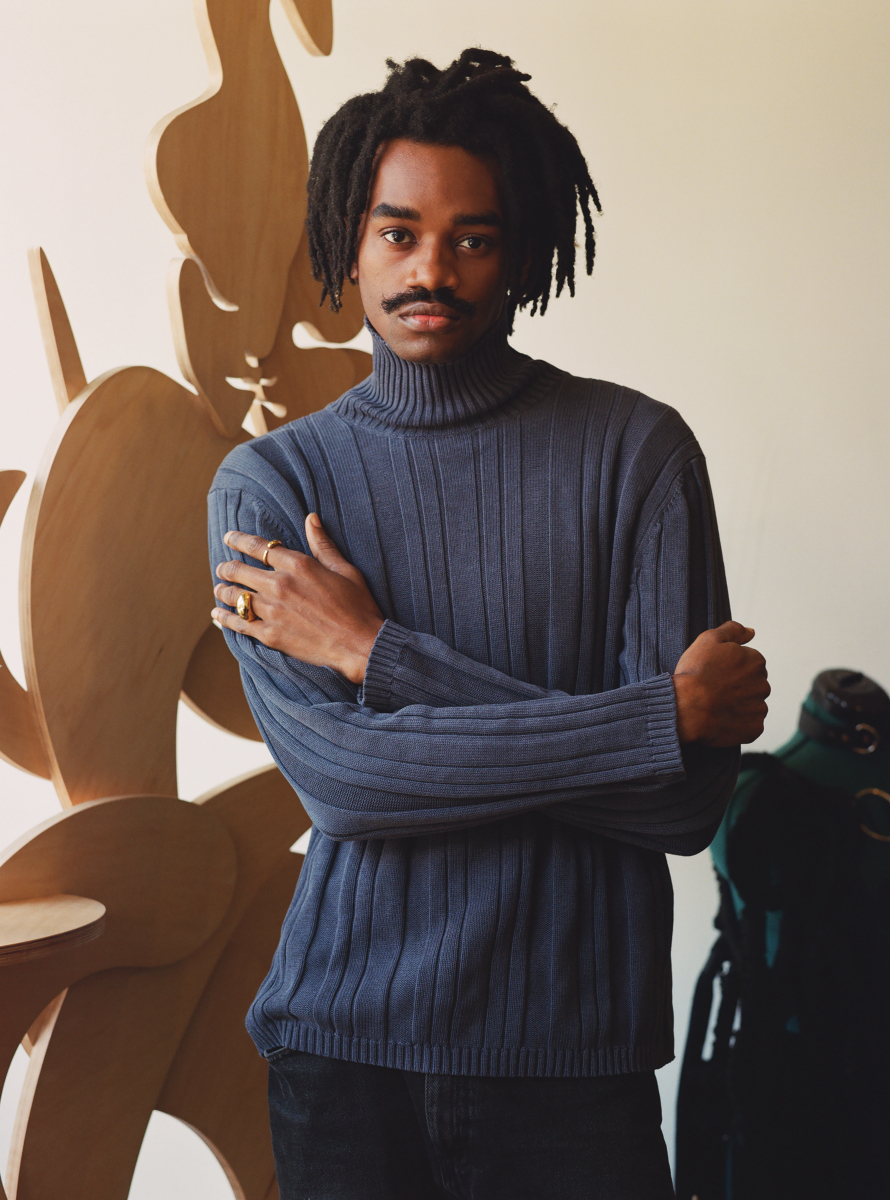
Even as his celebrity profile and clientele grows, Jameel finds that his practice of imagining and creating from his dream space has remained the same.
“There are specific lines and shapes that reoccur in my mind,” Jameel explains. “And to me, there are a few different kinds of praxis, and one is thinking about the physical shapes, architecture, nature and how Black people are interacting with it now and what might that look like in a future where Black lives are more equitable, and the world is more equitable.” It is this design practice and philosophy that has drawn the likes of Michelle Obama, Issa Rae, Tyra Banks, Cardi B, Megan Thee Stallion and so many more to Khiry. It is also this philosophy that has made him a recipient of the 2021 CFDA (Council of Fashion Designers of America)/Vogue Talent Fashion Fund, and turned Khiry into more than just a jewelry brand, a global phenomenon exploring Afrofuturism. But to Jameel, his large-scale success just means the stakes are higher.
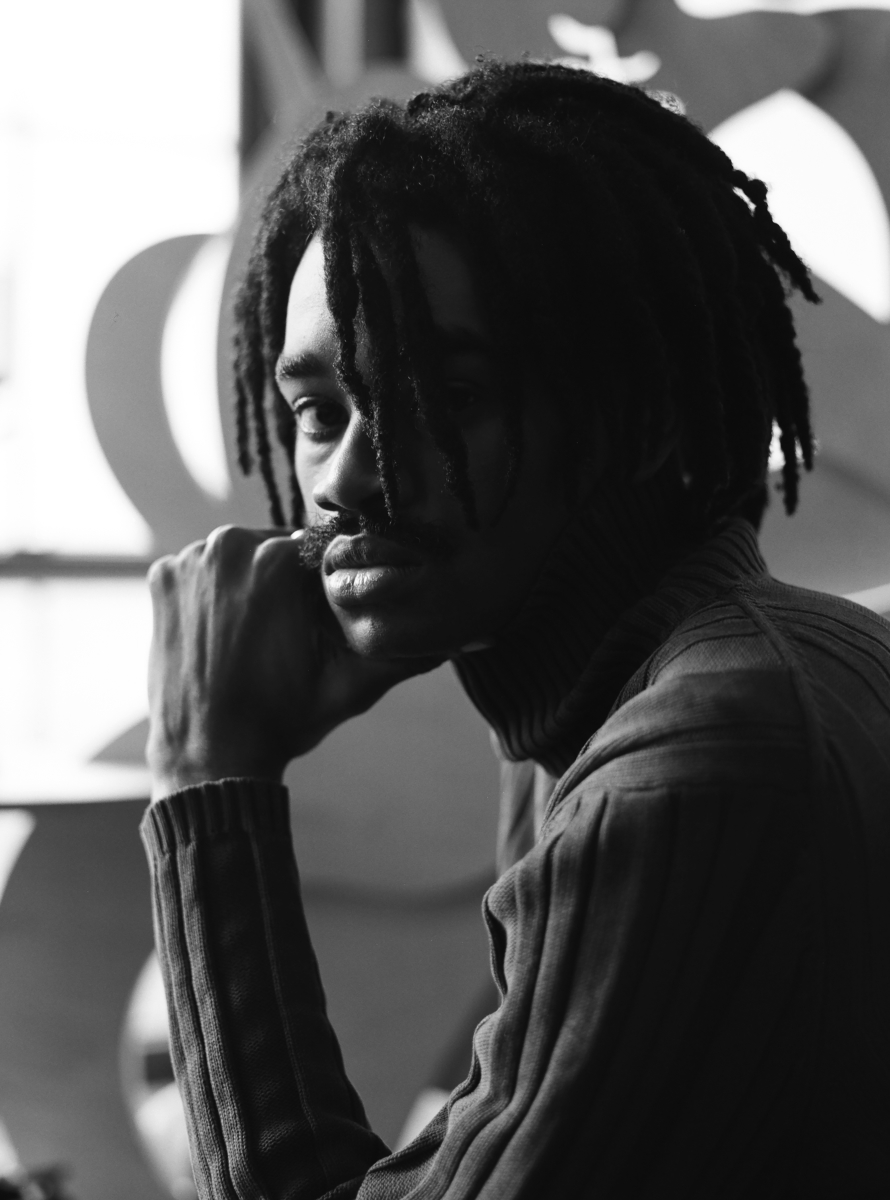
As a creative living in 2021, especially a Black one, Jameel finds that he has to pace himself. When asked about the future of Khiry, Jameel pauses; and not because he doesn’t know what’s next but because he has so much he wants to do. He shares that if he had been asked this two months ago, he would have listed the multi-category plans he has on the horizons, from retail pop-ups to internship programs and immersive experiences—all of which he says are still coming—but today he is more careful and deliberate about planning and executing those plans.
“I’m being extra careful about questioning what are the steps that can get me there with the structural ability to affect the change that I want,” Jameel says, “as opposed to getting to my goals tired and panting. How do I create a brand that can withstand the tides of history and continue to have a voice on the matters that will arise, all while continuing to have the ability to have a real impact on the careers of other artists, creatives, artisans and all other people in the supply chain? These are the questions I ask myself.”
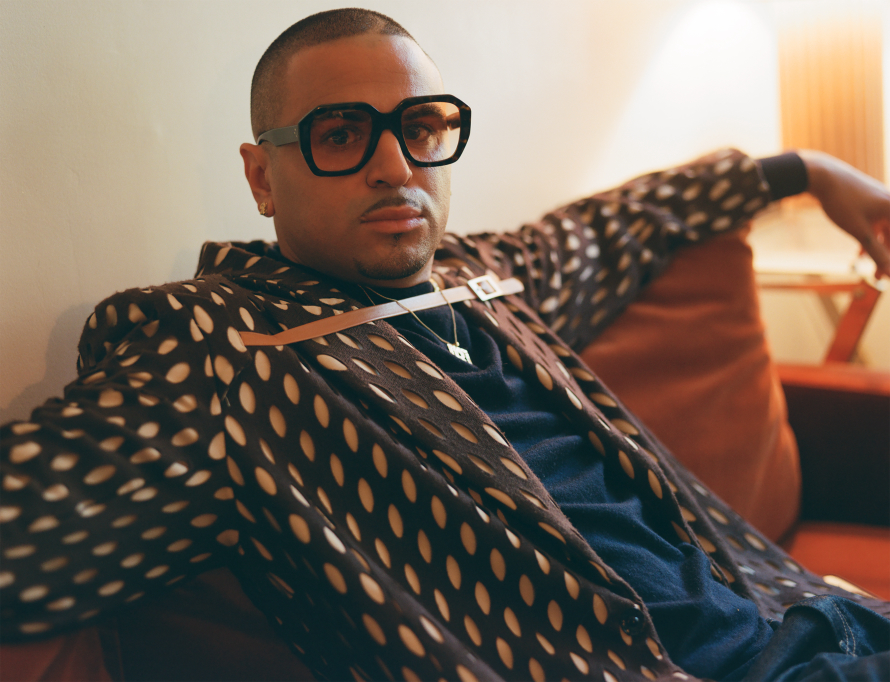
Luar Lovers, Relax: Raul Lopez Is Back
After a couple seasons pause, Luar came back to New York Fashion Week this year and blew everyone away. Designer Raul Lopez grew up in Brooklyn, founded Hood By Air with Shayne Oliver in 2006, then started Luar on his own in 2016. He’s had highs and lows. He’s as New York as can be.
As we talk, Raul Lopez begins to show me pictures, and they are not the type of pictures featuring fine-tuned glamour you might expect from a designer of his caliber. They are pictures of the most random things, but you can tell he is in awe of their beauty. To anyone familiar with Luar, this isn’t surprising. Raul Lopez, a queer Latinx designer, has spent his entire career creating beautiful garments from the most mundane things. Lopez first came into international
recognition as a co-founder of Hood By Air alongside Shayne Oliver, and then in 2016 went solo by launching Luar. By 2018, Lopez’s design had been worn by some of the biggest style stars in the world, including Rihanna and Solange, and he was one of the ten finalists for that year’s CFDA/Vogue Fashion Fund.
Born in Brooklyn to a Dominican family, Lopez’s interest in design could be traced back to his seamstress grandmother from the Dominican Republic, who arrived in the late fifties to work in a factory on Astor Place, and then his mother, who also took a similar path. “I just became so obsessed with how you could take this fabric and create something different and I was just wowed,” Lopez shares. “I also remember when my dad, who worked in construction, would try to make me come to the construction site and I would fake a stomachache to stay home just to see my mom’s sewing.” In lieu of a fashion degree (which Lopez shares that he wanted but his family could not afford), this became his fashion education, and he took it with great speed. By the time he was 12, Lopez was wearing his designs to school or making modifications to his clothes using his mother’s sewing machine.
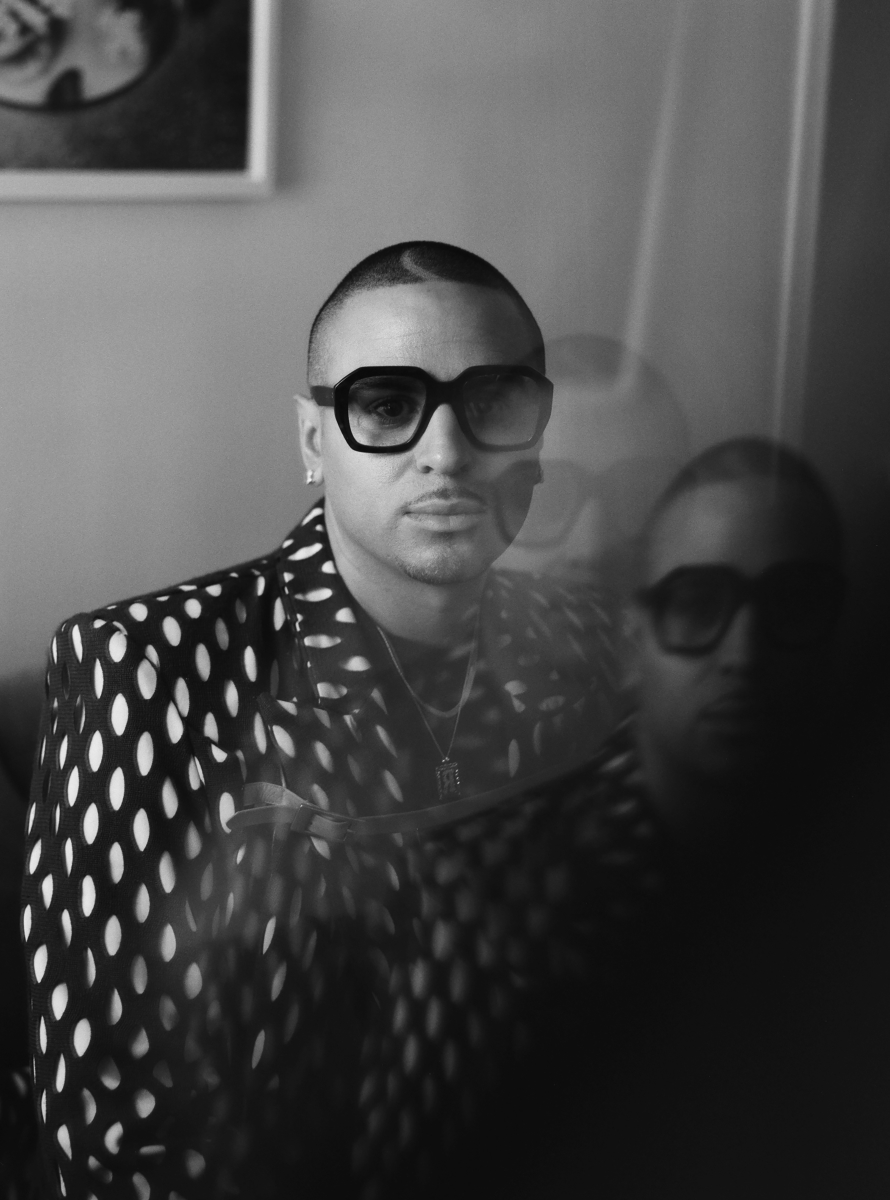
“When I was 11 or 12, I would chop up a T-shirt and jeans and I would take the sleeves off of it,” Lopez tells me. “I remember looking at my mom and how she sewed and saying ‘I can do this,’ and then grabbing the machine and just sewing the legs to the sleeves to create a long sleeve from a short sleeve and then make some texture on it. I also remember I went to school and everybody was like, what the fuck?”
As a child of immigrants, Lopez’s parents had certain expectations of him and his career path. He was expected to become a doctor or a lawyer, and while Lopez recognized that they just
wanted him to be successful, he also knew he wasn’t going to walk down a traditional path. “I always knew what I wanted to do and be. But at first, my parents weren’t the most supportive,” he says. “I think when I started Hood By Air, they thought maybe I was onto something because they started seeing that people were copying what I was doing and dressing the way I was and so they started to accept it.”
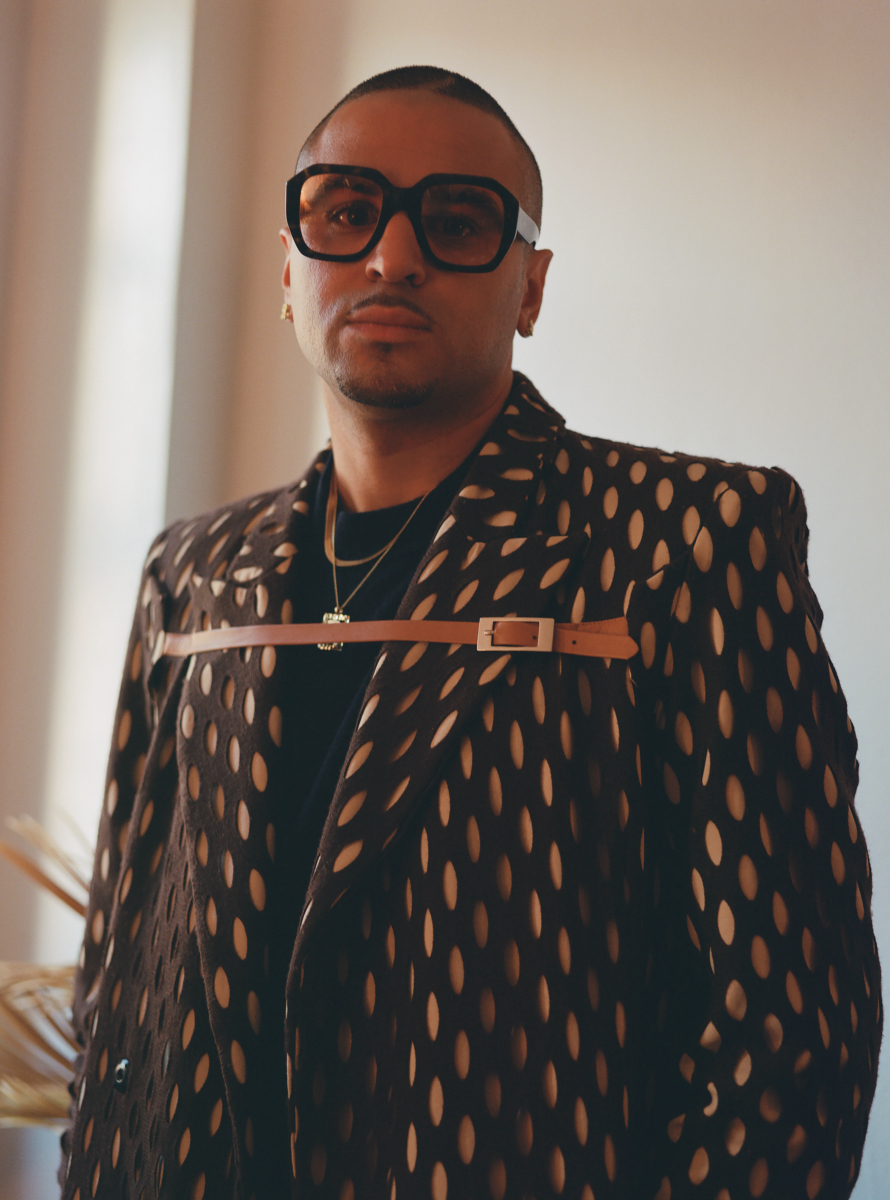
Lopez’s design approach is to bring all the chaos and grit and beauty that makes the everyday New Yorker experience and turn it into amazing pieces. He doesn’t need to go for a walk at the beach or make time to meditate, instead, he seeks out people and culture and even ugliness which he can then help people find beauty in.
“I’m a people person,” Lopez shares. “I’m the quintessential New Yorker and I am highly inspired by looking at people, trash and all the craziest things that people would not expect. I could look at a bag floating that gets stuck on a tree. And I would run after it and take a picture. I’m not really influenced by beauty. I like ugly. And I like to take the ugly and make people see the beauty in it. That’s what Luar is all about.”

Maisie Schloss Is the Boss
Since honing her craft as a designer at Yeezy and subsequently being awarded the inaugural Kanye West fashion incubator grant, Maisie Schloss has launched her own brand, Maisie Wilen, in Los Angeles and become her own CEO.
Maisie Schloss can't believe how much time she spends in her car. As the Los Angeles-based designer talks about her meteoric rise—and it is meteoric—she is fascinated most by how much time she spends working on everything other than actual designing now that she’s CEO of her own brand. In the last few years, Schloss has gone from being a design graduate to working at Kanye West’s Yeezy as a designer to being the first recipient of his Kanye West fashion incubator grant, which skyrocketed her career to new heights and led to her setting up on her own.
When Schloss and I talked, the 28-year-old was in New York in the midst of the madness of New York Fashion Week. She’s working on the styling, going over music sets, doublechecking everything and then triplechecking everything again to ensure it all works well as she prepares for her brand’s live runway debut in New York. And even with so much to do, you can tell Schloss is fascinated by it all and has been preparing for this her whole life. “I always joke that I’ve been grooming myself to be a designer since I was about 12,” Maisie tells us. “Fashion was always my thing. As a kid, I loved making art, I loved clothes, just always. So I’ve been very steadily working along this track for pretty much my whole life.”
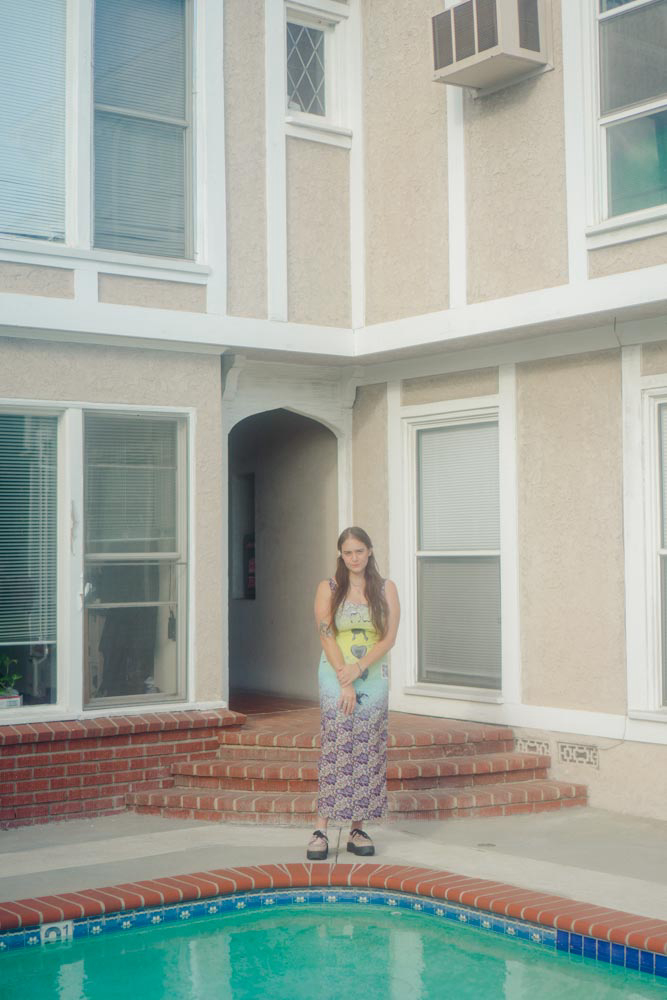
By her late teens, Schloss began actively making a career for herself in design by enrolling in the prestigious Parsons design program, and then moving to LA, where she began first as an assistant and eventually climbed to senior womenswear designer at Yeezy. “Working at Yeezy shaped me a lot,” Schloss shares. “Perhaps the biggest way it helped me grow as a designer is that it made me think realistically about clothes and think about the woman wearing the final product while designing.” In 2019, Schloss was selected for Kanye’s grant, which provided seed funding and mentorship to independent designers. The grant provided Schloss with an opportunity to do what she has always wanted to do on an even larger scale—design a brand geared entirely towards making fashion fun. Now working not just as a designer but also as a CEO, Schloss is intrigued by how much running a brand is really like being in charge of a perpetual, ongoing project. “It threw me into the spotlight, but also into having responsibilities more than just design,” she shares. “As a designer, you are really responsible for design and just that. Whereas now suddenly, I’m responsible for every aspect of the business. However, that has helped me think of the design too in a different way, in a sort of macro way, of how does it all fit together? The business, the design, the creativity, etc.”
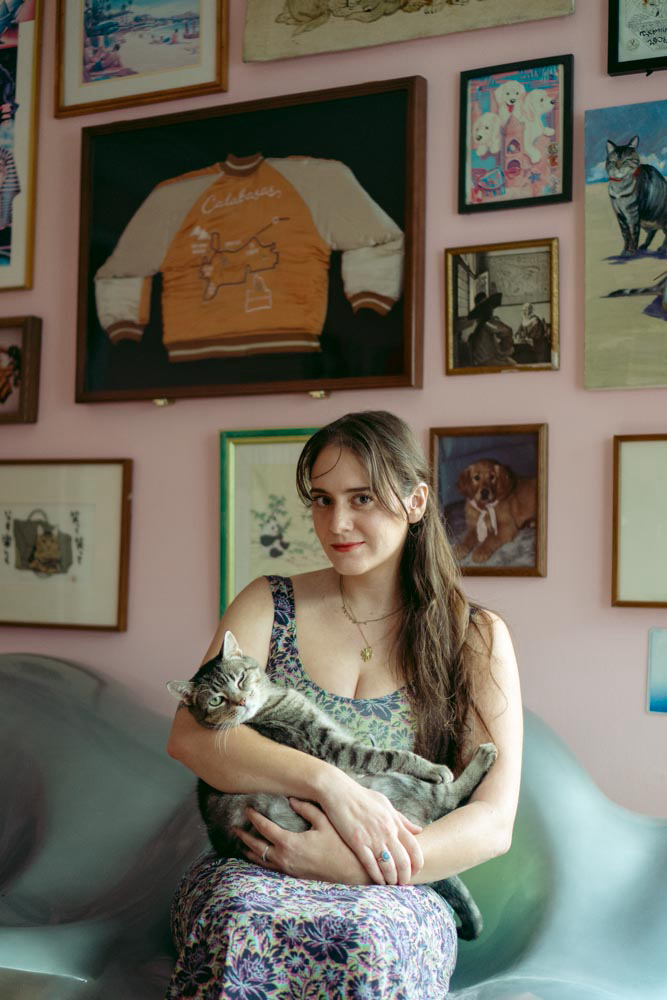
Today, Maisie is making waves in the fashion industry with her brand Maisie Wilen—named after her first name and her mother’s maiden name. And while her stint at Yeezy has no doubt been very influential in her career and she credits it for helping her become an even better designer, the Maisie Wilen design and aesthetic is entirely Schloss’s creation. One way the two brands differ greatly, according to Schloss, is print. “Now I’m designing with a lot of print, which didn’t come into play at [Yeezy],” she says. “But when designing Maisie Wilen, print is a very huge part of the entire design process.”
Schloss has ditched the “emerging designer” tag long ago and grown even beyond her co-sign from Kanye West. Now she has her sights set on even more and higher achievements. She wants to dress Dolly Parton, she would like to see Cher in Maisie Wilen. However, she insists that her biggest win would be to create and establish a brand that becomes the go-to for women looking for thrilling clothes. “I want to make clothes that feel very special,” she explains. “Clothes that are a little unusual but also your favorite item in your wardrobe that you get a lot of use out of. I want to make exciting clothes.”

From the U.S. Navy to the CFDA
Menswear designer Kenneth Nicholson studied fashion in San Francisco. Then he joined the Navy and traveled the world. Now he’s winning accolades for his menswear label, Kenneth Nicholson. This is clothing full of feeling and emotion.
When Kenneth Nicholson enlisted in the Navy, it didn’t initially seem like a place that would serve as huge inspiration for his menswear brand, but it did. Nicholson remembers a particular moment when he had looked at a room with the beds pushed to the extreme ends of the room. “It seems like a weird thing to say but I remember looking at it and thinking of how much it looks like a scene from a movie. It all looked so scenic and like a period film,” Nicholson explains over a video chat. That moment helped him begin to shift through his experience at the Navy and look at it like he would a film, fishing for references and appreciating not just the lessons in discipline but also the structure that the military applied in designing its outfits. Today, years later, he still makes references to military designs when designing pieces for his eponymous menswear brand Kenneth Nicholson.
Growing up in Houston, Texas, Nicholson was heavily bullied as a child, but discovered culture which provided a safe space for him to thrive creatively. “Movies and pop culture and fashion became these things that I could always reach for and take solace in,” Nicholson shares. After securing a degree in fashion studies at the Academy of Art University in San Francisco, he enlisted in the Navy in 2004 and worked on a military base in Afghanistan for a year, and, later on, was briefly in Thailand working as an interior design consultant. In 2016, he debuted his brand with a simple goal—to interrogate menswear.
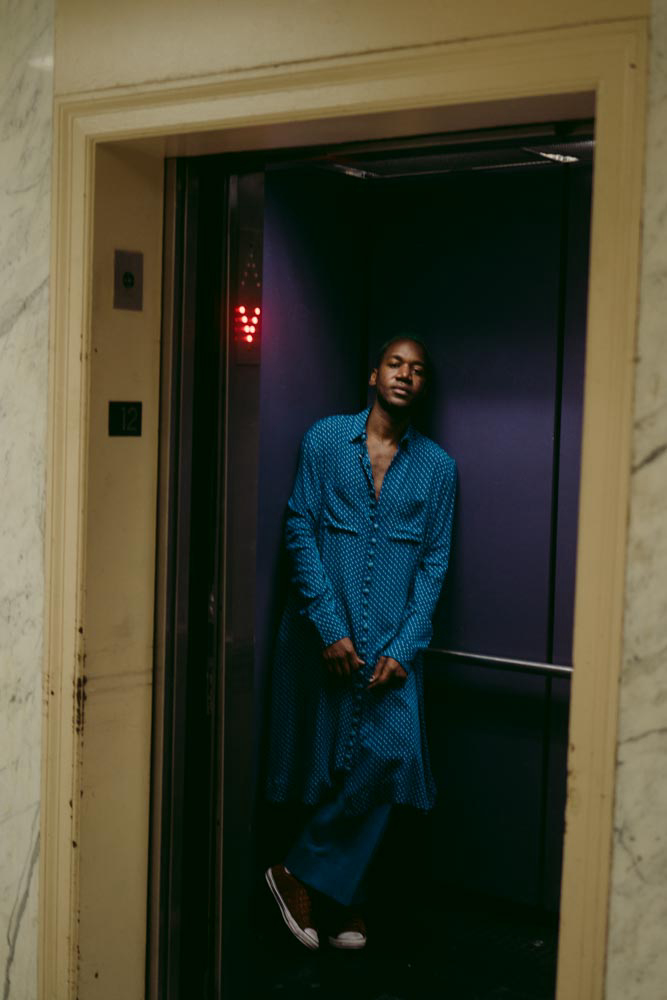
“With Kenneth Nicholson, I want to expand what menswear can offer,” he shares. “I want to give people options in menswear and I want to create pieces that hold emotions.”
And that is exactly what he has been doing; artfully bringing shapes that have traditionally been considered to belong to women’s fashion into practical menswear pieces and marrying these with his signature military details, Nicholson has created a brand that is redefining what menswear can be. For Kenneth, interrogating menswear also goes beyond providing men with more clothing options. It includes providing them with clothes rich in sentiment. “For me, it is important that my clothes have emotions behind them,” he says. “I don’t want to just create pieces and have people wear them. I want them to fully experience it all.”
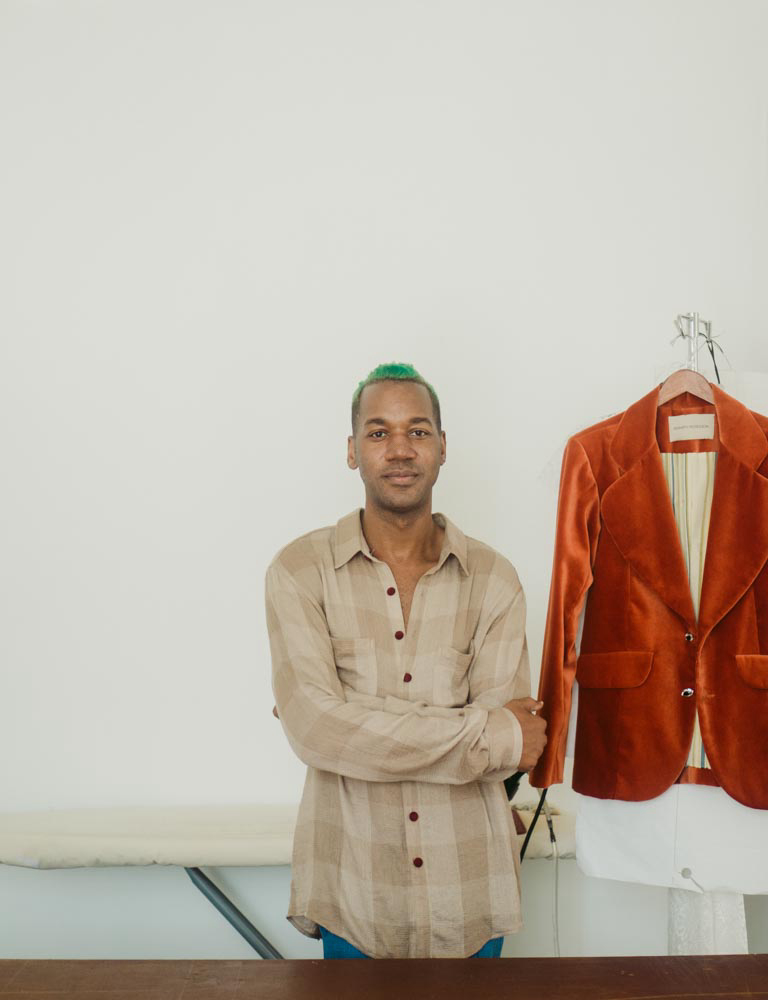
This distinct approach to fashion has made Nicholson highly sought after. Recently, he styled British Formula One driver Lewis Hamilton for the Met Gala. And beyond that, he is a recent CFDA/Vogue Fashion Fund grant recipient, a newly inducted CFDA member, and a 2021 CFDA Fashion Awards nominee for American Emerging Designer of the Year.
Nicholson’s upward trajectory isn’t stopping anytime soon. Despite his brand being relatively new, he approaches design with an expert eye and an understanding of what he wants and the impact he wants to have that one would expect from someone with a brand much older than five years. Nicholson is a prime example of a new crop of designers who are redefining what the fashion industry is by building on the changes brought by those that came before, all while showing everyone what the future of fashion can look like.

